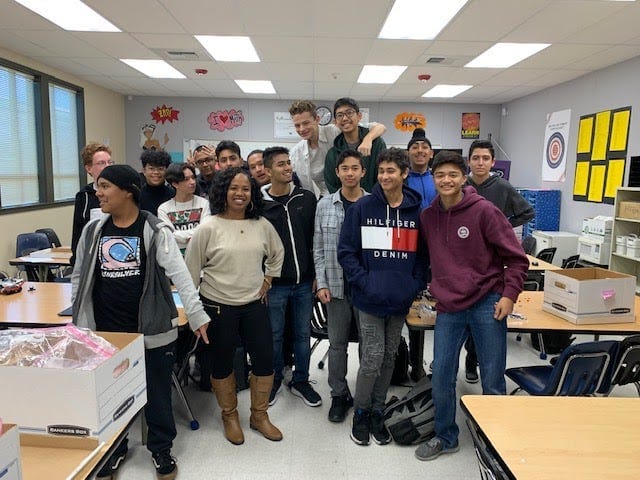Learning From Last Spring for a Successful Virtual Classroom
Q&A with Tywania Griffin, a Math & Computer Science Teacher and CodeHS Teacher Trainer

Meet Tywania Griffin, a math and computer science teacher in California and a CodeHS Teacher Trainer. Tywania tells us of the success’ and challenges her school faced last school year switching to virtual, and with that some great tips as the new school year approaches.
Q: Tell us about your background and teaching experience.
A: I am a math/computer science teacher at Millennium High School in Tracy, CA. I have been teaching for 15 years. I started teaching computer science with CodeHS in 2015.
Q: How was your transition to virtual teaching this year?
A: My transition to virtual teaching last school year was not a challenge. My school came up with a plan and made sure that our students who needed Chromebooks were provided with one. We all pulled together and helped each other and our school was successful in making sure that our students didn’t miss a beat! We even successfully made it through our summer school program online as well.
My computer science classes had a really easy transition because CodeHS is an online platform and my students were very familiar with my class expectations. We continued following our regular school schedule and met virtually throughout the week. My class didn’t miss out on any of the CodeHS lessons and we were able to finish the school year together.
Q: What was your school’s setup for virtual teaching this year?
A: My school allowed teachers to use either Zoom or Google Meet to conduct our virtual classes. We followed our normal school schedule and created a spreadsheet that had the times that teachers would meet with their classes. In the beginning, we weren’t required to meet everyday with our classes, instead we met with them at least twice a week. We also set up virtual office and tutoring hours for students who needed support.
Q: How did your students adapt to the virtual classroom?
A: There were definitely some challenges that we had to deal with during the transition. First, we had to make sure that all of our students had access to a computer so we lent our Chromebooks to those who needed one. Communication was more important than ever during this time, so we used Google Classroom as our major means of communicating with our classes. We emailed Classroom codes to all students and we used our school social media accounts to make sure that the families and communities were well informed about our plans. One of the biggest challenges that students faced were issues with computer microphones not working, however, our tech department did a very good job of making sure that these issues were taken care of in a timely manner.
We learned that we had to limit our classroom content and make the course material as interactive as possible to keep our students engaged.
Q: What tips would you like to share with other teachers to lead a successful virtual classroom?

A: Clearly communicate your classroom and school expectations. If everyone is on the same page and everyone has the resources needed to be successful, then your school will be successful. Also, make sure to check in with your teachers. Make sure that they are doing okay and they have what they need.
If you have or are thinking of incorporating computer science education into your school, I would strongly urge you to look into using CodeHS. Their programs are teacher and student friendly and ANYONE can use it! I didn’t have a computer science background and I learned how to teach my courses all by using CodeHS.
Have some virtual teaching tips you’d like to share on our blog?
Share them with us here. We’d love to hear from you!


